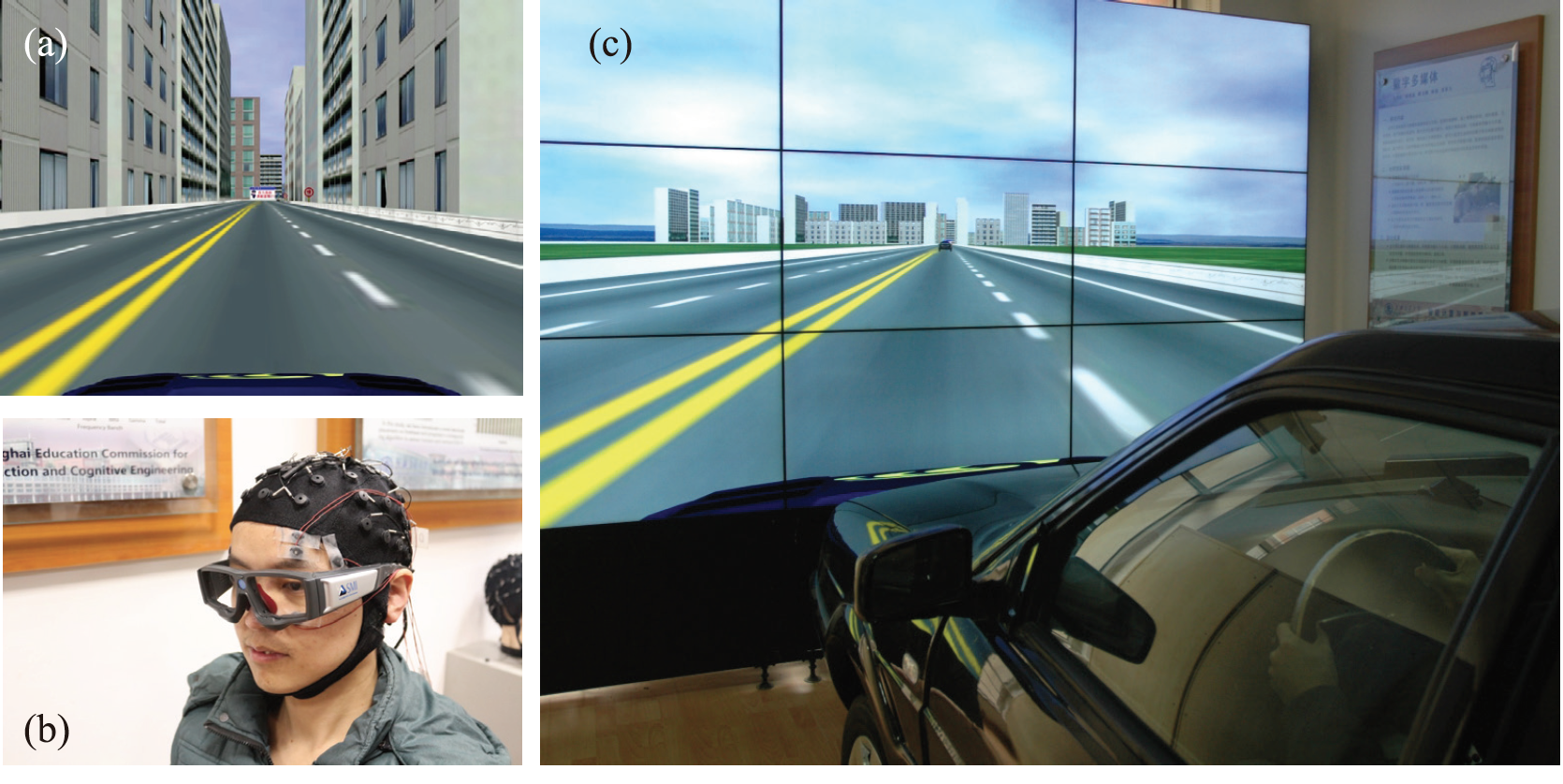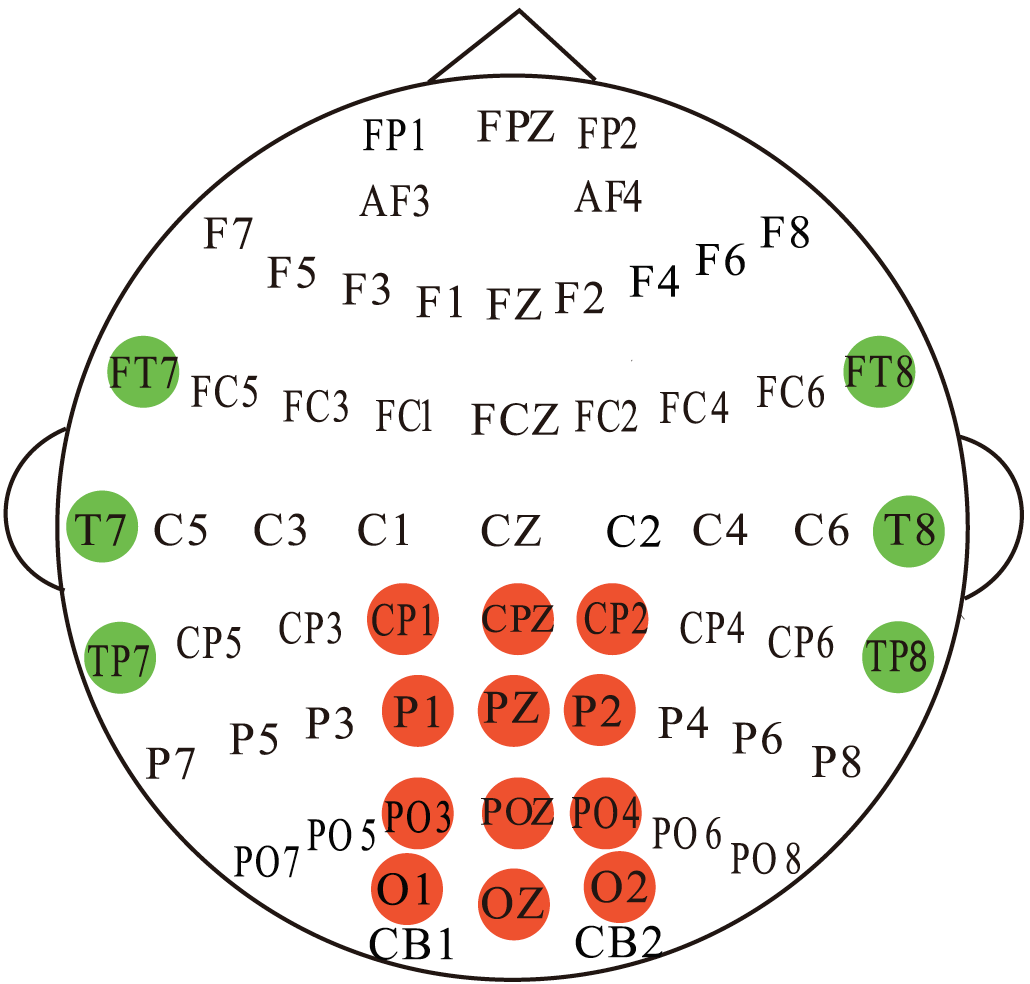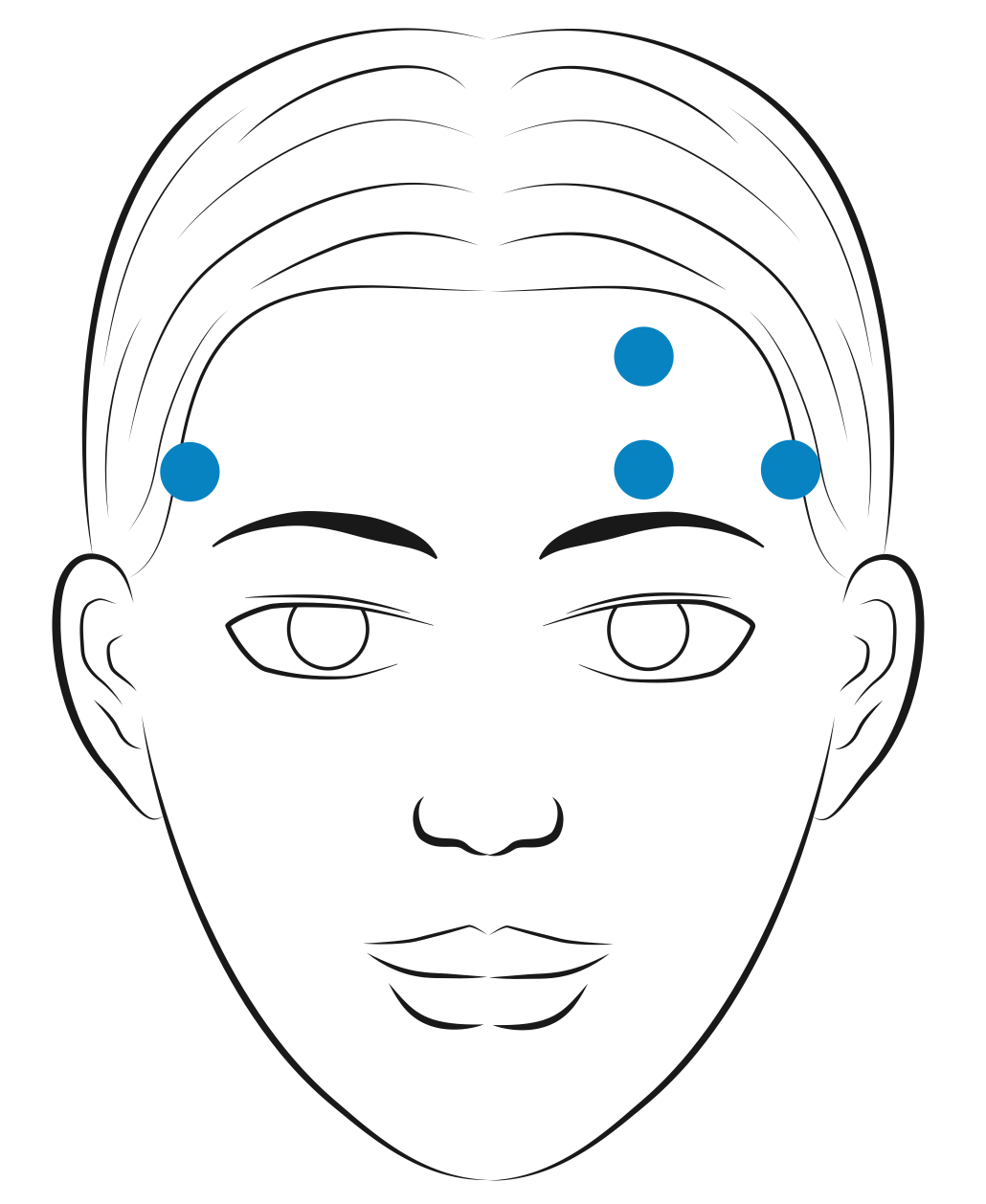Experiment Setup
We developed a simulated driving system to collect the EEG and EOG signals, as well as to label the signals.
A four-lane highway scene is shown on a large
LCD screen in front of a real vehicle without the unnecessary
engine and other components. The vehicle movements
in the software are controlled by the steering wheel and gas
pedal, and the scenes are simultaneously updated according
to the participants’ operations. The road is primarily straight
and monotonous to induce fatigue in the subjects more easily.
The simulated driving system and the experimental scene are as follows:

|
Most experiments were performed in the early afternoon after lunch to easily induce fatigue when the circadian rhythm of sleepiness reached its peak.
The duration of the entire experiment was
approximately 2 h. The participants were asked to drive the car
in a simulated, dull environment.
We used the Neuroscan system to record the EEG and EOG during the experiments.
The channels that are used in the feature extraction are shown as follows.
Additionally, the participants wore
SMI eye-tracking glasses for their eye movements to be recorded.
We then calculated the PERCLOS indicator values of the participants during the experiment and used them as vigilance labels.
Feature Extraction
For the temporal and occipital channels, the PSD and DE features are directly extracted at the frequency bands referred to above.
For the forehead channels, we decompose the original EEG signals to forehead EEG signals (which are mostly related to the subjects' brain
activity) and EOG signals (which are mostly related to the subjects' eye movement-induced electrical field fluctuations, by means of ICA
and minus methods. The EOG components are then used to produce 36 eye movement-related features.
The
SMI eye-tracking glasses provide information about eye closure,
and thus, we can simply calculate the PERCLOS labels by the following formulation:
Dataset Summary
The SEED-VIG dataset is composed of four parts.
-
EEG features include:
-
EEG_Feature_2Hz: EEG features (power spectral density: PSD, differential entropy: DE)
from the total frequency band (1~50 Hz) with a 2 Hz frequency resolution.
The fields "psd_movingAve", "psd_LDS", "de_movingAve", and "de_LDS" indicate PSD with a moving average,
PSD with a linear dynamic system, DE with a moving average, and DE with a linear dynamic system, respectively.
The data format is channel*sample_number*frequency_bands (17*885*25).
The first 1–5 in the first dimension 'channel' correspond to temporal brain areas, and the last 7–17 correspond to posterior brain areas.
-
EEG_Feature_5Bands: This part is similar to the EEG_feature_2Hz file except that EEG features (PSD, DE)
are extracted from five frequency bands: delta (1~4 Hz),
theta (4~8 Hz), alpha (8~14 Hz), beta (14~31 Hz), and gamma (31~50 Hz).
The data format is channel*sample number*frequency bands (17*885*5).
-
Forehead EEG feature files have a similar architecture to EEG features, but there are only four channels for the
data tensor (4*885*25 and 4*885*5).
-
EOG features. The fields "features_table_ica", "features_table_minus", and "features_table_icav_minh"
indicate forehead EOG features that correspond to different VEO and HEO separation methods using ICA and
minus approaches. The data format is sample number*feature dimension (885*36).
-
The PERCLOS label files contain continuous vigilance labels (ranging from 0 to 1) calculated from eye
tracking data.
Download
 Download SEED-VIG
Download SEED-VIG
Reference
If you feel that the dataset is helpful for your study, please add the following references to your publications.
1. Wei-Long Zheng and Bao-Liang Lu, A multimodal approach to estimating vigilance using EEG and forehead EOG.
Journal of Neural Engineering, 14(2): 026017, 2017.
[link]
[BibTex]





